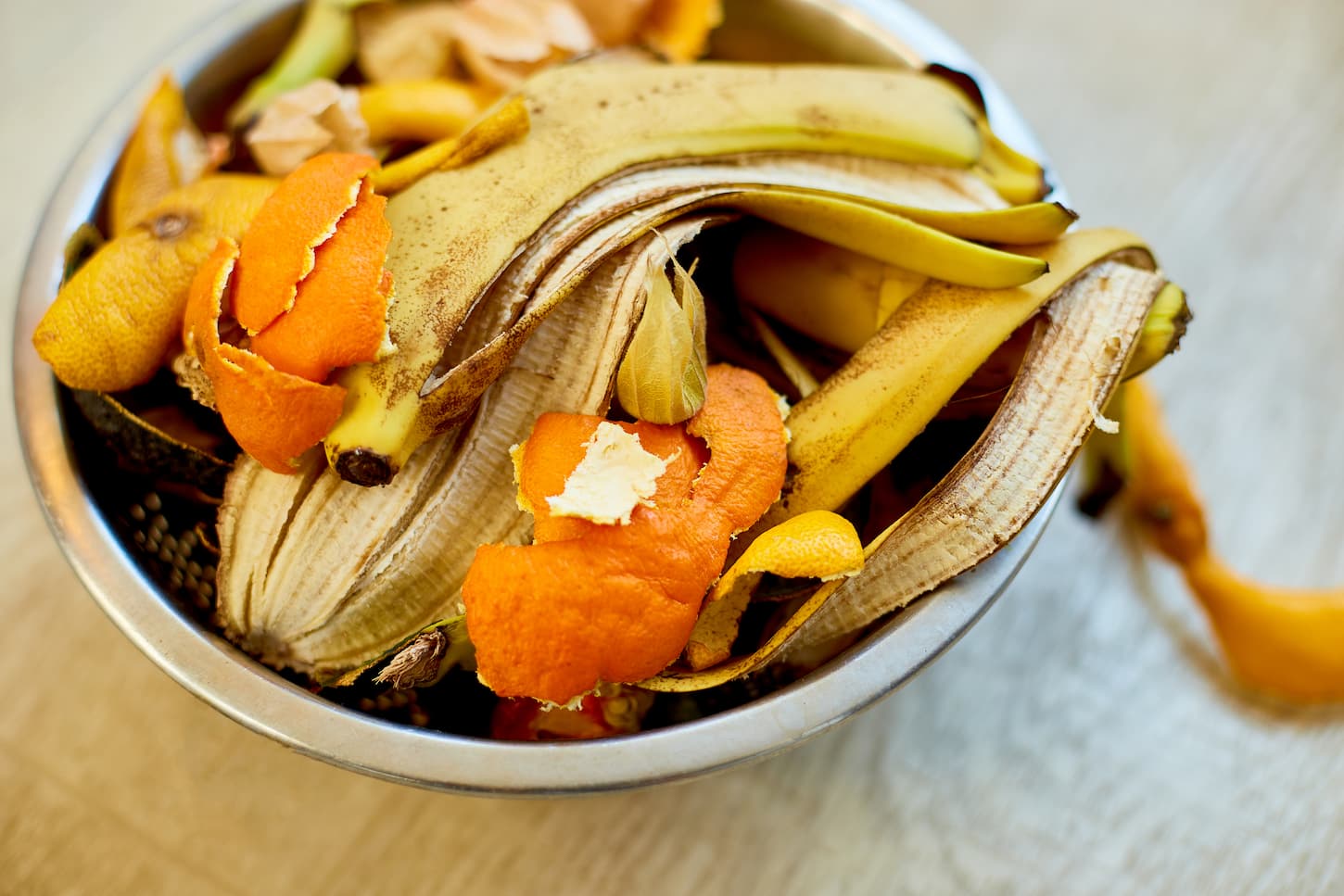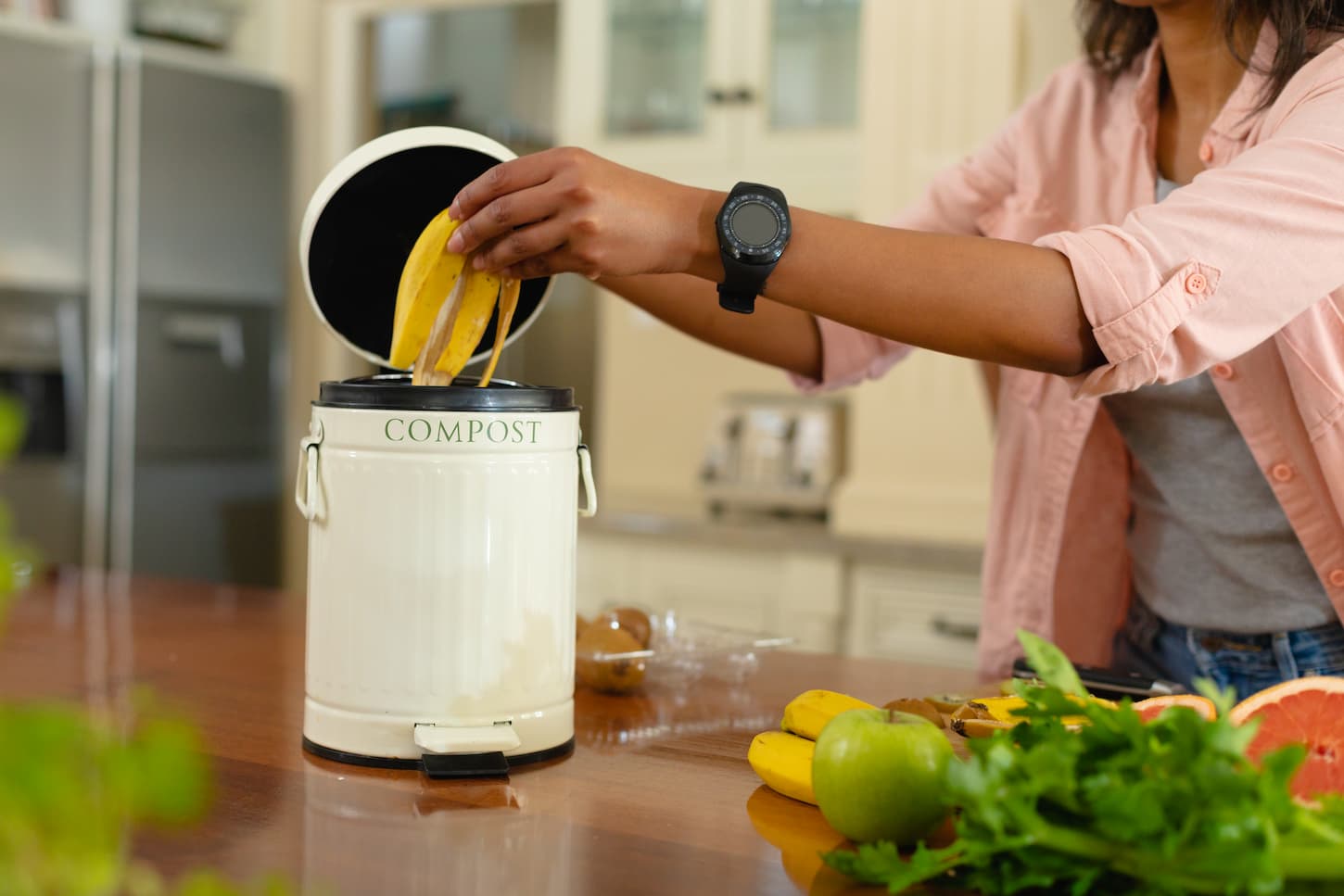Bananas are one of the most popular fruits on the planet, rich in potassium and Vitamin C, among other vitamins and minerals. They are not only valuable for their taste but also for the versatile uses of each banana part, even the peels (yes, the peel). For example, can you put banana peels in compost?
Banana peels are a great addition to compost, as they add essential minerals and vitamins that improve soil quality. Banana peels compost quickly and can improve the soil’s ability to retain water.
Making your compost is an environmentally friendly and easy way to avoid potentially harmful substances in chemical fertilizers and save some cash.
Read below to learn all the techniques and knowledge you need to make the most out of the banana peels you decide to add to your compost.

How Long Do Bananas Take to Compost?
Fresh banana peels will take around 3-4 weeks to break down, while rotten banana peels have already begun the natural breakdown process and will compost faster, within as little as a few days. How long the banana peels take to compost depends on their condition.
How long banana peels take to compost can vary between the types of bananas you used and the specific atmosphere conditions of where the compost is located. Generally, it takes around four weeks for it to compost entirely.
Note: don’t forget to remove any stickers off the banana peels. Those don’t compost well. If you do forget them, they will eventually degrade, but it takes a whole lot longer than 4 weeks – usually several seasons.
In What Conditions Do Banana Peels Compost the Fastest?
There are ways to speed up the composting process by cutting the banana peels, using different composting styles, rotating the composter, adding water to the compost, and adequately aerating the composter will speed up the process.
For banana peels or any leftover pieces of fruit, cutting them into smaller pieces will make it easier for the leftovers to decompose. Correctly mixing the banana peels with other fruit or vegetable parts and leftovers in the compost can also be a way to speed up the process.
Fruit parts, in this case, banana peels, are “green” matter because they are rich in nitrogen. To speed up the process, you need to add more “brown” matter, such as leaves, straw, or hay, rich in carbon. Composting quickly needs the right balance of green and brown wastes.
Together they create a reaction resulting in a higher heat build and a faster breakdown of the organic materials.
Another condition that will help you achieve results faster is properly aerating the compost. Turning the composter or making holes allows a higher and more consistent supply of oxygen which microbes need to do their work effectively.
Hydration is vital for the effective breakdown of organic matter. Avoid the compost from staying completely dry and, ideally, keep it damp. Whenever it becomes wet, you can turn it so that it mixes up and returns to the optimal damp state.
Now, I live in Utah (which is a desert) so this can be hard. That’s where adding a lot of wet green wastes really helps keep things wetter without having to use precious water.
As already mentioned, rotten or rotting banana peels are an attractive way to get the desired compost faster since the organic breakdown is already in place. If you have worms in the compost, they will enjoy the rotting banana peels as they can be consumed much more quickly.
If you choose to add rotten or rotting banana peels, make sure that the reason for rotting is the natural process of organic breakdown. In some cases, rotting is a sign of disease that may exist in the soil even weeks after the banana peel has decomposed in the compost.
Even if you decide to be safe and use fresh banana peels, three to four weeks is not much to wait for high-quality and nutrient-rich compost. Especially when you consider that banana peels break down much faster than other compost alternatives.
Are Banana Peels Good for Soil and Compost?
Bananas peels are both excellent as a source of vitamins and minerals and as organic matter that will improve the quality of your soil. They are fantastic for composting, soil, and enriching soil.
Banana peels are rich in potassium, magnesium, phosphates, calcium, sodium, and other vital elements. If lacking, the growth potential and quality of the crops produced by the deficient soil can be severely reduced.
Banana peels are also an organic matter that will improve the soil’s hydration and help it remain optimally damp.
What Is the Best Type of Compost Method to Use for Banana Peels?
Any compost method that allows the banana peels to be in a damp compost that receives constant aeration should be effective in the organic breakdown. Banana peels will also decompose quickly in anaerobic composting methods.
Composts that give easy mechanisms for aeration, such as compost tumblers or ones designed with holes, are great compost methods to consider.
If you have any rotted or rotting banana peels, you can also consider vermicomposting instead of traditional methods. This is a method where worms are given shelter and regularly feed on the given organic scraps.
As previously mentioned, worms love rotting organic matter, which means giving them banana peels in that state will result in many high-quality worm castings, which are nutrient-rich additions to your soil.
Commonly Asked Questions about Composting and Banana Peels
Now that you have the basics of composting banana peels under your proverbial belt, let’s make sure we’ve got the rest of your questions answered. Here are some of the most commonly asked questions with answers.
Note: don’t see your question? Use the contact us page to email it to us. We’ll get it answered directly and add it here for others who have the same question.
Can You Put Banana Peels in Compost Tea?
Banana peels are a nutrient-rich organic matter that can be a great addition to the compost tea you are making. It’s easiest to make the compost tea with banana peels rather than adding the banana peel to any already-existing compost tea.
Can You Make Compost Tea with Banana Peels?
You can make compost tea with banana peels by cutting them into small pieces and putting them in water.
Strain the result into a distilled liquid afterward and spray it directly onto your plans or mix it up with more water. For example, at a ratio of 1 part concentrated liquid and five parts water.

Key Takeaways and Next Steps
With inflation at its highest since the 80s and increasing awareness of the impact we have on the environment, many people are looking into environmentally friendly and affordable compost alternatives.
Banana peels are a great addition to any compost you make due to the essential elements they add and their beneficial qualities as organic matter.
Make sure your compost is the best possible – make sure you know that you can add some cooked vegetables into your compost. Go give this article I wrote a read next: Composting Cooked Veggies: The All-Important Do’s and Don’ts.
Resources
Learning from your own experience is essential, but learning from others is also intelligent. These are the sources used in this article and our research to be more informed as homesteaders.
- “Health Benefits of Banana Peel.” WebMD, 26 Aug. 2020, www.webmd.com/diet/health-benefits-banana-peel.
- Way too many banana peels in my compost. Please don’t forget to remove any stickers!
